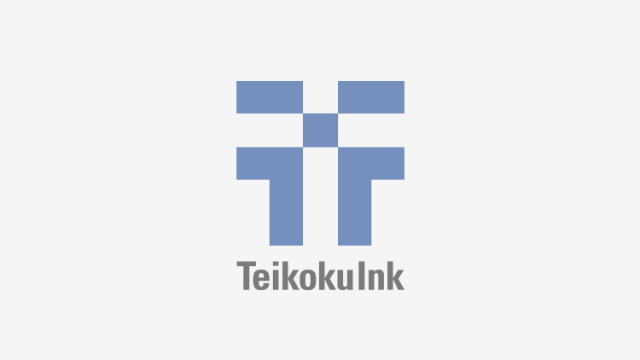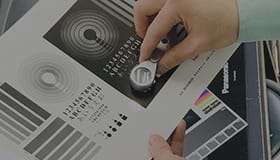Product overview
UV FIL-393 CLEAR is an UV curable screen printing clear which is excellent in resistances, super glossy and have reveling property. It has excellent adaptability to flexible materials. It cures very quickly and has good blocking resistance on both sides due to its slickness, making it suitable for both-sided glossing.
- UV Clear Ink

Application
- Package, Poster, Books, etc.
Features, Function
- Applicable to a wide range of flexible materials. (Good elongation, bending, and cutting)
- Flexible and tough, with excellent curing property and high speed printability.
- Excellent stencil stability, solvent resistance, low odor, and low skin irritation.
- Good abilities on offset printing and on solvent based inks with super gloss and good leveling properties.
Substrate
- On paper and offset printing
- On our solvent based screen inks(EG)
- Paper
Dilution
- Not required
Promoter
- SM-278 DEFOAMER 1% or less(measures to prevent foaming and repelling)
- SM-301 FLOW AGENT 1% or less(improvement in leveling)
Recommended cleaner
- Screen Cleaner L2
Mesh
- T 270 to 420 mesh(Coverage is 60 to 100m2/kg at 350)
Drying, Curing
- Accumulated energy: about 180mJ/cm2、Peak power:225mW/cm2(Eye Graphics UV integral light counter)
- Two 80W/cm Metal halide lamps, lamp height 15 cm, belt speed 20m/min
Caution
- Checking adhesion before production: Adhesion may change depending on the substrates, processes, and printing. Be sure to check the adhesiveness before mass production printing.
- Ink shelf life: 12 months from production date, unopened.
Safety
- UN No.: 3082
- UN Classification: Class9 Environmentally Hazardous Substances
Handling
- Use safety gloves and eyeglasses to protect skin and eyes. If the ink comes in contact with skin, wash with soap and plenty of water (or lukewarm water) and consult with a doctor.
- Containers should be closed tightly after use and stored in a cool and dark place.
- SDS is available upon request. Please request a copy and read it carefully before handling the products.
Resistance
| Test item | Test Conditions | Test results |
|---|---|---|
| Pencil Hardness | JIS K 5600-5-4 (pencil),Weight 750g, hardness which does not make scar | 6B or below |
| Heat | 80℃ 72 hrs., check appearance and peel off | No defect |
| Hot Water | 50℃ Hot water, 72 hrs. check appearance and peel off | No defect |
| Humidity and cool-heat cycling test | 10 cycles, 80℃(4 hrs.)~25℃(1 hr.)~-20℃(4 hrs.)~25℃(1 hr) Check appearance and peel off | No defect |
| Boiling water | Soak in boiling water, after 5 min check appearance and peel off | No defect |
| Water | Soak 240 hrs. in tap water, check appearance and peel off | No defect |
| Acid | Soak 7 hrs. in 5% HCl solution, check appearance | No defect |
| Alkaline | Soak 7 hrs. in 5% NaOH, check appearance | No defect |
| Alcohol | Gakushin scrub tester, cotton, weight 500g, 200 back and forth, check peel off | No defect |
| Gasoline | Gakushin tester, Cotton soaked High octane gasoline, weight 500g, 100 back and forth. | No defect |
| Scrub | Gakushin scrub tester, cotton, weight 500g, 1000 back and forth, check color fade | No defect |
| Punching | Punching by press machine | No defect |
| Solvent | Gakushin scrub tester, cotton soaked ethyl acetate, weight 500g, 10 back and forth, check peel off | No defect |
| Bend | Best tester, condition of no crack in printed ink layer after 180 degree bending | 2mm or less |
| Blocking | Weight 200g/cm2 60℃ 100 hrs. | No defect |
| Accelerated Weathering | Weather meter(carbon arc), BP temp. 63+/-3℃ Raining rate 18 min/120 min, check color fade and appearance | 400 to 600 hrs. (no defect) |
Test Condition
- Test condition 【80W/cm2 Metal halide lamps, Height 15 cm, Belt speed 10m/min】 【Substrate: PVC sticker (on VK ink)】 【T 300】
- Above resistance test results are measured results in our laboratory and they are not guaranteed values.
- Information contained in this catalog may change without prior notice.
FAQ
-
What is screen printing?
-
Screen printing is a type of stencil printing which uses a technique of duplicating the image from a design made on mesh stencils.
When printing ink goes through the mesh, it transfers the image onto the substrate material. Other than air and water, any substrate materials are printable. Not only flat surfaces, but also curved, specially shaped, and molded products are suitable for screen printing.

